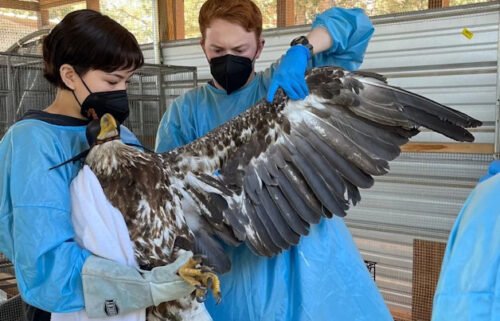New Ore. imported firewood rules begin Jan. 1

Oregon agricultural officials have finalized the rules for a new state lawaddressing imported firewood that goes into effect Jan. 1. Oregonians will have a choice to buy local or buyfirewood that has been heat-treated and labeled as pest-free.
“Therules prohibit firewood from outside the Pacific Northwest unless it has beentreated at a temperature of 140 degrees Fahrenheit for one hour to kill all thepests inside it,” says DanHilburn, director of plant programs with the OregonDepartment of Agriculture. “That’s very important, because there are invasivepests and diseases outside of our region that could travel to Oregononfirewood.”
The2011 Oregon Legislature passed the firewood law and gave ODA regulatoryauthority.
For the past year, ODA has been working on the rules that go alongwith the law. Following apublic comment period, the agency has now finalizedthose rules in an effort to diminish the possibility of dangerous insectshitching a ride to Oregon on firewood.
“Wethink these rules will be put into place just in the nick of time,” saysHilburn.
Starting in January, Oregon consumers should look for two types of firewood available forsale.
“Therewill be wood that is cut in Oregon, Washington, or Idaho that is allowedwithout heat treatment,” says Hilburn. “That is the best firewood. If itharbors any insects, they are the onesthat are native to Oregon. Those are nota threat to our forests.
“The other kind that will be available to consumers isfirewood coming from outside the Pacific Northwest, which will be heat-treated.Itwill have a label stating that it pest-free.”
Eventhough local firewood is not required to be labeled, commercial sellers canchoose to do so anyway. A product label is allowed to claim an approved PacificNorthwest firewood.
A pest-free label, however, will require the same heattreatment needed for firewood originating from outside Oregon, Washington andIdaho.
Stateswith invasive species problems like emerald ash borer, Asian longhorned beetle,or sudden oak death have plenty of dying trees that are cut for firewood andthen moved.
These treesdie in the first place because of the insect ordisease, which can then show up hundreds of miles from any local infestation aspeople take the wood with them or sell it far from the source. It hashappenedin other parts of the country, it can happen in Oregon.
“Emeraldash borer started out in the Detroit, Michigan area and has been spreadingabout 20 miles a year on its own,” says Hilburn. “The bug flies and spreadsnaturally. But there have beeninfestationsshowing up in campgrounds well in front of the leading edge of natural spread.
“Ash is an excellent firewood, so trees that are dying in Michigan often end upin the back of a pickup truckor in an RV that goes camping in Missouri orPennsylvania, as an example. You can tell the insect is being moved with thefirewood because it shows up first in campgrounds.”
Emeraldash borer, which has become a poster child for how firewood can be a vector forinvasive species, has killed millions of ash trees in Michigan and parts ofIndiana, Ohio, Illinois, andOntario. The insect has been found in severalother states.
Even though Oregon is about 2,000 miles away from the mainactivity, the pest could easily show up on firewood.
Otherunwanted pests can be readily transported on firewood. Even though Californiahas regulations prohibiting the transportation of firewood from quarantinedareas for sudden oak death,nobody can guarantee firewood will not cross theOregon border.
Asian longhorned beetle has been found in the Midwest and NewYork, and represents a major threat to Oregon’s native trees. Awood wasp notnative to Oregon is destroying pine trees in New York and Pennsylvania.
Firewoodoften comes to Oregon over great distances, even if it doesn’t seem economical.
A quick survey conducted by ODA at just a handful of stores in the Salem areafound commercialfirewood from six states and Canada. The wood came in smallbundles and nearly all carried live insects. Fortunately, none were found to bethe serious invasive bugs Oregon does not want.
Thereis also the possibility of families moving from back east to Oregon, bringingwith them nearly everything in their possession– including firewood.
Thestate’s new firewood law is the first major legislative victory for the OregonInvasive Species Council. OISC has done significant outreach and educationprior to the law coming intoeffect, including a major “buy it where you burnit” campaign two years ago that featured billboards and radio ads.
“Thisis the kind of regulation we hope will simply guide people’s behavior,” saysHilburn. “ODA will be checking labels as we go about our other business to makesure people arecomplying, but everyone agrees the best way to enforce this lawis to get the word out.”
Ahandful of other states have enacted their own firewood importation laws.Neighboring Washington and Idaho will be watching closely as Oregon movesforward with its law to helpprotect its natural resources.
Withthe camping season at an end, the attention now shifts to homeowners who heatwith wood or simply enjoy a crackling fire as the weather gets colder. They’llbe looking for a source of wood for fuel. Oregonians now can help do the rightthing.
“Ilook at it like the Smokey Bear campaign, which is designed to get people topay attention and put out their fires,” says Hilburn. “This law is protectingour forests from another threat, thethreat of invasive species. We need peopleto make sure they are buying local wood or buying wood that has been heattreated.”



